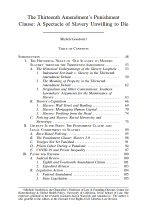By Tom O’Grady and Gemma Buckland
The Better Justice Partnership has set out to transform the penal system. But to state the obvious, it is politicians and their advisers who enact reforms. If we want to influence their choices, we must first understand them. This report is an attempt to see the world of criminal justice reform through their eyes. We explain their worldview from first principles. We show when and where they share the common assumptions of the criminal justice reform sector, and how they differ. We also discuss what they think is politically feasible, and why they sometimes resist changes that reformers see as common sense. Armed with this knowledge, we then outline how the Better Justice Partnership should go about achieving its aims of a more effective and humane penal system in England and Wales. The central message of this report is that if it wants to be more impactful, the criminal justice charity sector needs to become more politically savvy. Policymakers view the sector as politically naïve. They think that campaign groups are too quick to point out problems yet too slow to suggest feasible solutions. Sometimes they feel misunderstood, wishing that reformers would show greater awareness of the constraints under which they operate. In their opinion criminal justice is a uniquely difficult area of government to work in, and the political peril faced by those in the Ministry of Justice is not recognised. This lack of understanding matters. If reformers had a better grasp of the constraints under which politicians act, they could have more influence on them. Our interviewees clearly believe that the penal system in England and Wales is in a deep crisis, with radical reforms needed. When deciding what changes to make, they share many of the end goals of the sector. They all want a much greater focus on rehabilitation. Where they arguably differ is that their core goal is to balance punishment with rehabilitation. Both must go together in their view, and much else that they do flows from this basic assumption. What stops politicians and their advisers from attempting bold reforms? They do not view public opinion as an insurmountable barrier. In fact they think that in the right circumstances, the public could be persuaded to take a less punitive path. So they lack neither knowledge about what should change, nor a belief that the public would stand in its way. But they view reforms as exceptionally hazardous, and say that there can be little political incentive to enact them. The risks are high and the rewards potentially very low. The Better Justice Partnership, therefore, could focus its efforts not so much on educating politicians and the public on what needs to change, but rather on persuading politicians that it is worth their while – and not too risky – to make those changes in the first place. That they feel afraid of trying to make changes is crucial in understanding why some changes that seem obvious to penal reformers are viewed as anathema by politicians. Disagreements are as much about what can be done as what should be done. We identified several key barriers to reform. Fear of the media response is uppermost in politicians’ minds. They also perceive a lack of interest in justice from colleagues, and the unique career risks run by anyone entering the Ministry of Justice, as crucial. In their view the Treasury stands in the way of change too, perhaps more so than in any area of government. Above all, any strategy that Better Justice creates will need to give politicians a clear incentive to tread what they perceive as being an exceptionally hazardous path. Our participants made many suggestions for change, which we outline in detail at the end of this report. These included ways to frame reforms (for instance, as saving money) that would make them more politically palatable. They argued for gradual policy changes that slowly build confidence with the media and the public; slower change in the near term may achieve much faster changes in the long run. More progressive reforms could also be wrapped up in other changes, such as better police funding or support for victims, that make the public feel safer and show that politicians have their interests at heart. And their dual focus on punishment and rehabilitation means that they view smart tagging and visible community payback schemes as obvious, and politically viable, reform strategies.
London: NACRO, 2024. 40p.





















